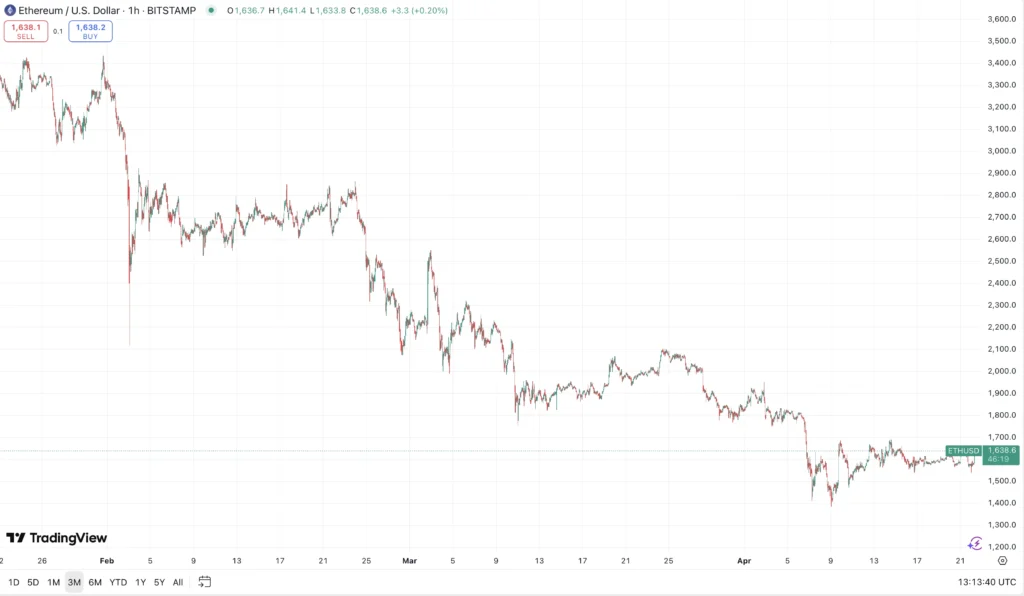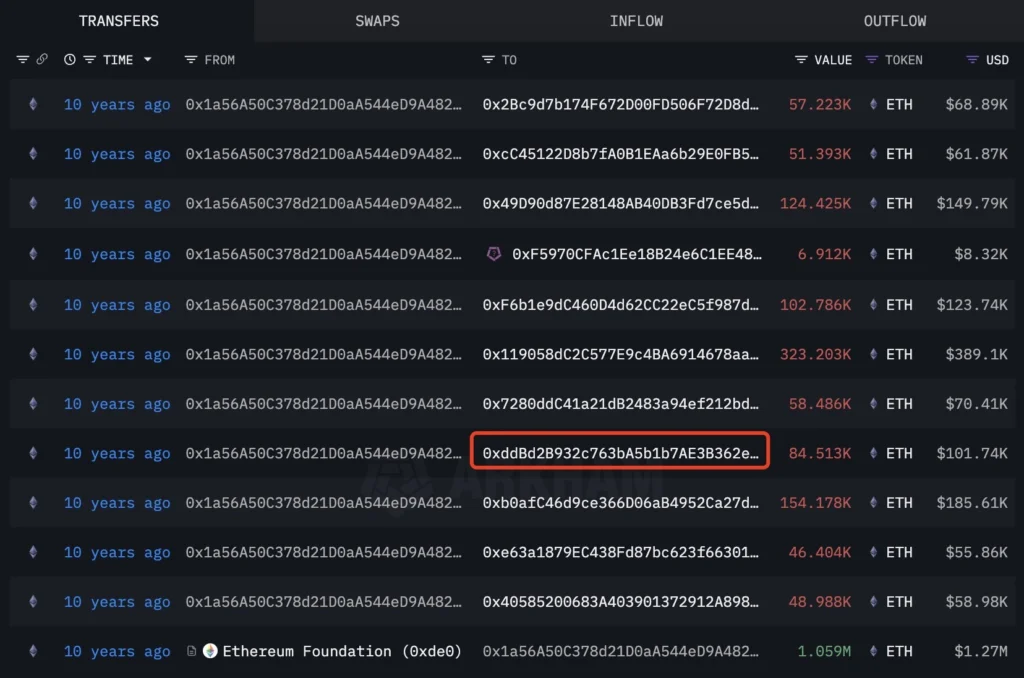- Restructuring at Ethereum Foundation: Buterin for research now
- The research priorities include Layer 1 scaling, ZK proofs, RISC-V virtual machines, and UX improvements
- Upcoming upgrades include the previously discussed Pectra, Fusaka, and Glamsterdam
- Meanwhile, a wallet associated with the Ethereum Foundation transferred 1000 ETH to Kraken
- The transaction triggered market concern and speculation over potential sell-offs
Recently appointed Co‑Executive Director of the Foundation Tomasz K. Stańczak shares the info about new strategic restructuring at Ethereum Foundation: Buterin for research and architectural improvements such as L1 scaling, zkVM, ZK proofs, the use of RISC-V virtual machines, and UX development.
At the same time, a wallet linked to the Ethereum Foundation transferred 1000 ETH to Kraken, which caused some tension in the markets and the community, while ETH itself has not managed to recover the $2K level since March.
More on the Strategic Restructuring at the Ethereum Foundation
As we’ve already seen, the Ethereum Foundation recently made significant changes to its leadership, appointing Hsiao-Wei Wang and Tomasz Stanczak as co-executive directors of the Ethereum Foundation.
Now, Tomasz Stanczak has shared further details about this restructuring, particularly that Vitalik Buterin is shifting from routine coordination and crisis triage to fundamental research in Ethereum’s technical advancements.
Specifically, his focus will be on researching and developing architectural solutions including:
- zkVM and zero-knowledge proofs
- RISC-V virtual machines
- Layer 1 scaling
- User experience (UX) improvements
You may also recall that Vitalik Buterin recently expressed support for proposals around Pectra and Fusaka — to make more space for data (blobs), implement a hybrid short-term proof system, and create standardized proof aggregation layers. In addition, the development and deployment of Glamsterdam are under consideration. Altogether, these changes are expected to significantly improve Ethereum’s security, efficiency, and scalability.
What previously appeared to be developments expected in 3–5 years may now be implemented within 1–2 years, including next-generation execution and consensus layers.
The 1000 ETH Transfer to Kraken
At the same time, all these active efforts could indeed be critical for Ethereum, as its main competitor Solana — offering similar functionality, faster speeds, and lower costs — continues to gain critical mass.

Speaking of ETH, we observe a consistent decline: it has fallen 35.6% over the past six months and is currently trading around ~$1637. Moreover, following the sharp drop on April 6 from ~$1800 to ~$1400, ETH has yet to fully recover. As of now, a return to ~$2089, which we observed on March 24, still seems out of reach.

The recovery may be further complicated by the recent news that the Ethereum Foundation was recorded transferring 1000 ETH worth approximately $1.58M to Kraken — adding more fuel to speculation and sell-off concerns.

The reason for concern lies in the fact that the transaction came from an address that had previously received over 84,000 ETH from the Foundation in the early years of the project when the price was around $1.20. Today, those holdings are worth more than $130 million, and the fact that they are being activated after nearly a decade is being interpreted as a possible preparation for position reduction.
Tension is further heightened by the fact that this same wallet recently transferred a total of 5,000 ETH to the trading firm Cumberland DRW in two separate transactions — first for ~$7.3M, and then for ~$8.9M. This reinforces the perception of a possible strategy of phased liquidation of some foundation-held assets through OTC partners, which could exert additional downward pressure on the market, especially in an environment of low liquidity and weak buying momentum.
Conclusion
It’s a fairly complex situation. On one hand, the Ethereum Foundation is clearly preparing for intensified competition and is working to address its key technical limitations.
On the other hand, ETH has yet to recover — and we’re not talking about all-time highs — and while these sales are by no means confirmed as liquidations, they may nonetheless further weaken Ethereum’s current positioning.
Stay tuned for updates, be adaptive in the rapidly evolving technological and crypto landscape, and keep your strategy grounded and balanced.






